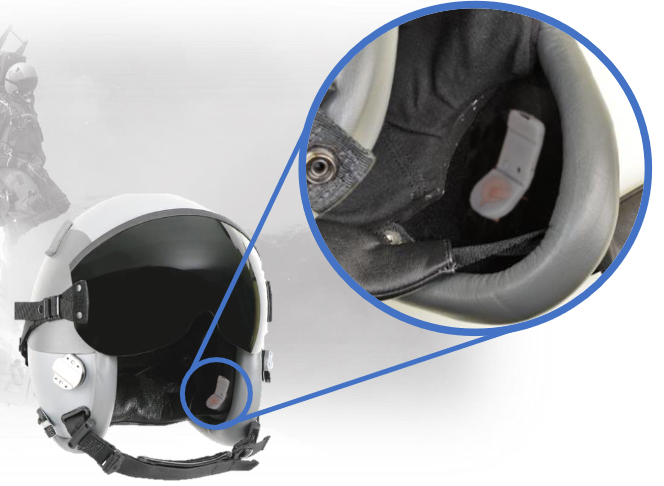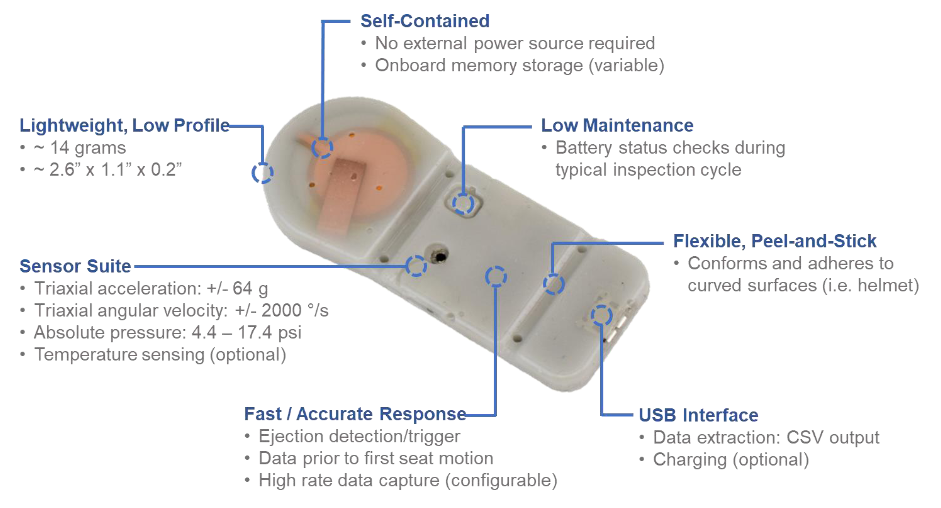
Available Products –> Biodynamic Acceleration Sensor
Contact Us
Aircraft ejections place a high degree of strain on the body, especially the head and neck. The Biodynamic Acceleration Sensor System monitors actual ejection events to accurately capture pilot head motion before, during, and after an ejection. It helps decrease the risk of warfighter injury and provides more accurate data models to evaluate seat technology and safety equipment in ejection environments, as well as to aid in mishap investigations. The system can operate across a variety of fast jet platforms, ejection systems, and test scenarios. Click to view full sales sheet.
Features:
- Comfort. Fits comfortably and safely on or inside the helmet (i.e. underneath ear cup)
- Low maintenance. Operates for up to one year without device replacement or additional upkeep
- Automatic. No on/off action required by pilots with automatic sensing and data collection
- Easy consumables. Disposable and easily replaceable (peel-and-stick attachments)
- Data collection and storage. Accurately collects biodynamic data before, during, and after ejection
- Sensor modularity. Can be programmed based on use case (i.e. flight vs. sled test vs. lab test)
CRG has designed and fabricated fully functional prototypes, captured helmet impact test data at WPAFB and demonstrated survivability of the system, and captured high speed rocket sled data at Hurricane Mesa Test Facility.

